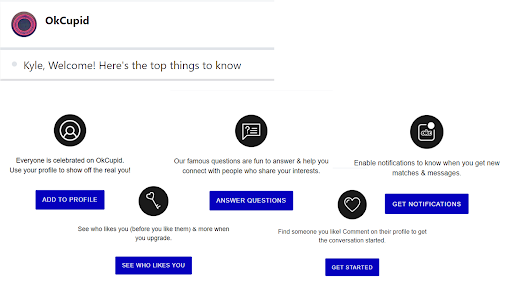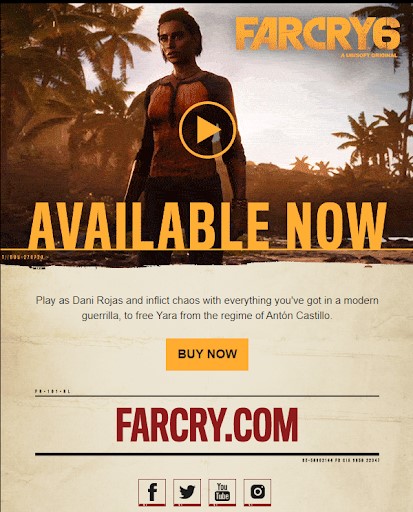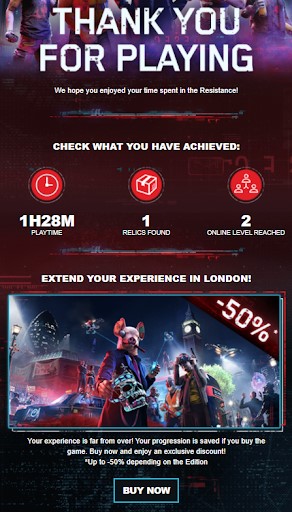You’re on a date. After a movie and dinner in what seemed to be a fun and thrilling night, you both went your merry way home. You wake up the next day, and bizarrely enough, you don’t get a single message from your date.
You send him a DM and he responds. Thankfully, he’s still interested in you. But the initial moment, where he never responded after the first date, feels like it could have gone better.
Businesses that don’t integrate drip email campaigns are exactly like the situation I just described. While you can still promote your brand without drip email campaigns, using this method can help your business build and maintain a strong relationship with customers.
What are email drip campaigns?
When we talk about “email drip campaigns”, we refer to an automated series of emails that follow after a customer has taken action on your website, or filled out an offline lead form. They are tailored in context with the action taken and can be an instrument for much higher conversion rates.
Let’s imagine a conversation between you and your date in the introduction earlier.
If your date texts you, “I had fun tonight, hope you did too,” follows up with “Good Morning! How are you feeling?”, and asks “There’s this cool coffee place downtown. Wanna check it out?” After a couple of days, you’ll probably be more comfortable with going out with that person again.
Using email drip campaigns with your leads and customers works in the same way. You send them continued emails for a certain duration to nurture them, bringing out a better result. This also potentially turns your lead into an evangelist more quickly.
It’s easy to set up an automated sequence of emails. To get started, you need a list of your subscribers’ email addresses. However, using a customer relationship management (CRM) solution will make the job easier for you. Most CRM platforms allow you to set up automated email sequences.
Integrating a CRM can drastically improve the results of drip campaign initiatives. Advanced CRM platforms offer tailored solutions considering your specific needs. If you’re looking for more options, exploring alternatives to Copper CRM might provide the perfect fit for your business.
These come loaded with extensive tools to streamline your messaging workflows and improve interactions with clients, which results in a concentrated and individualized strategy. After all, each message is aligned with the unique interests and activities of the TA.
This is in addition to seamlessly providing you with data on customers that have opened your emails, customers that didn’t, customers that signed up, made a purchase, added to cart, etc.
Four Email Drip Campaigns That Will Help You Grow Your Company
There are different types of drip campaigns to take note of. And as enticing as it may seem to use every single one, you may want to focus primarily on these four first.
Here are four email drip campaigns you should implement right away:
1. Sending A Welcome Email Sequence
If a customer has signed up to use your app or service, or subscribed to a newsletter, it’s only fitting that you welcome them on board.
A welcome email sequence is one of the easiest marketing automation methods to set up. The reason is that you may only send one email, and then follow up with the standard promotional emails, notification emails, newsletter emails, and other general email sequences that you currently have in place.
Here’s an example from the dating app ‘OKCupid.’ Upon signing up for the app, the fine romantic is greeted with an email, welcoming them to the platform.
The email also lists the unique selling points of the app.
Since users who are greeted with the welcome email usually don’t know much about the business yet, it’s a good idea to give them a general overview of your service in this email. Just like what OKCupid did.
If you’ve ever introduced your business casually to someone at a bar, this is the language you should go for. As much as possible, highlight only the unique selling points, and the data relevant to the customer. Of course, you need to vary your approach depending on your product and audience. Some audiences will prefer a more formal tone of voice, while others are fine with a more conversational tone.
Whatever you do, though, don’t brag about how you broke some Guinness World Record on the initial welcoming email. It tends to turn off potential customers.
After the initial OKCupid email greeting, the user is updated via email about activity on his profile. That’s the neat thing about Welcome Sequences. They still make sense, even when strung together with other automated sequences.
Congratulations! In one email, you’ve already nurtured your customers. This brings us to our next sequence, which pairs well with the welcome email.
2. Promotional Email Sequence With Special Offers
Whenever you decide to have a fun promo, or perhaps unveil a new product, it’s best to utilize email sequences in addition to your usual Google and Facebook ads.
Upcoming Products and Offers
When Ubisoft announced their upcoming project, ‘Far Cry 6,’ they built a lot of hype around it. Part of that marketing strategy involved a promotional email sequence.
This is the first email that promoted Far Cry 6. It was sent four months before the game was released on Oct 7, 2021.
It featured the main protagonist of the game and contained links to the game’s various trailers. It also had a call-to-action at the bottom where recipients could pre-order the game before release for exclusive in-game items.
Ubisoft sent out three other newsletters culminating in the game’s release. Each newsletter featured a unique aspect of the game, linked to a trailer (they made tons of trailers), and nudged the user to pre-order.
When it was finally released, a newsletter was sent as well to tell gamers Far Cry 6’s finally out. It also prompted them to buy the game.
You can apply the same idea to any upcoming product you may have. Release a sequence before a product’s release, and when it’s finally out, send an email out as well.
Limited Time Promos
Applying that email sequences to limited-time offers, discounts, and products works in the same way as product announcement sequences, but with a bit of a twist.
For limited-time discounts and offers, you have the option to announce it on the same day the promo goes live. Instead of building an email sequence to when the promo starts, you build an email sequence leading up to when the promo ends.
Ubisoft announced a free trial weekend for their game, Watch Dogs Legion, where players could experience the full game for free over the weekend.
After the free weekend had ended, they sent an email counting down the last remaining hours for the 50% off promo.
This email presents itself as the last chance to get a good deal on a new game. It’s a ticking clock that plays upon its recipients’ fear of missing out (FOMO) and increases click-throughs.
This type of email sequence works exceptionally well when paired with a welcome email sequence. Immediately after the user signs up and is greeted, they see these fantastic new items, discounts, and promos that encourage them to purchase.
Welcome / Promo Drip Email Campaign Hybrid
You can also create a welcome email / promotional email sequence hybrid by offering a discount after welcoming the new user to the platform.
When you sign up for a trial of Frase, an AI-powered writing platform, you receive the welcome email above. It thanks you for joining the community of Frase users, offers you a $1 deal for full access to the platform’s features, and gives you a link to a video that teaches you how to use it.
While I’m not really a fan of selling on the first email, $1 is just a tiny amount that Frase subscribers are more than willing to pay for full access. What’s more important, though, is that Frase values its subscribers enough to teach them how to use the platform.
3. Emails About Cart Abandonment
When customers add something to their cart, they’re one step away from making a purchase—just one step from experiencing your product. However, if these customers leave your website without making a purchase, this is known as cart abandonment. They might have different reasons for abandoning their cart, but it’s nothing that a little convincing can’t help with.
Some reasons for cart abandonment include skeptical customers deciding to research competing products, unexpected fees, network connectivity issues, and high shipping costs. The most effective cart abandonment issues address the significant concerns users may have head-on.
You can also inform the customer that they have an item in their cart from your site, create urgency by telling them there is limited stock, and if all else fails, offer a promo such as free shipping and discounts. However, you should be careful not to offer a discount too early in the game.
Remind Customers About their Abandoned Cart
Leave a friendly reminder to customers that they’ve left your site without checking out. They may have either forgotten what they were buying or decided not to make a purchase yet. If it’s the former, then a reminder email will do the trick.
Source: Really Good Emails
You should send this type of cart abandonment email if the item has been sitting on the customer’s cart for a couple of hours. If that still doesn’t work, you can send another follow-up after a few days.
Inform Customers That You’re Selling Out Fast
In this scenario, your customer was interested enough to put an item in their cart but not interested enough to click on “buy now”. Here’s where FOMO comes in handy. Telling customers that you’re running out of their item quickly or that you only have limited stock will trigger a sense of urgency in them.
You may send this a day or two after the initial reminder. If that still didn’t work, then send the next email below.
Offer Promos for Customers With an Abandoned Cart
High and unexpected shipping costs is one of the leading causes of abandoned carts, according to a study by Barilliance. To combat customers’ reservations on this issue, you can draw them back by offering discounts or free shipping promos.
Source: TargetBay
Cosmetics company Tinte Cosmetics offers a 10% discount incentive for those who abandoned their cart. However, they also create urgency by informing the potential buyer that the promo is only effective for 24 hours.
This discount should overcome customers’ reluctance on shipping fees and nudge them to go through the checkout process.
Inactivity Emails
You don’t need to detect abandoned shopping carts to remind customers that you’re still in business. Non-eCommerce platforms may also use the same principle to get customers back on their site or app. They may remind customers in fun ways, nudging them to engage in the service again.
By the way, popular AI-powered writing platforms have emerged as remarkable allies, effortlessly crafting the text part of emails in a delightfully casual or playful manner.
For copywriters who have expended all their bold and entertaining ideas for presenting information, these platforms serve as invaluable assistants, breathing new life into content creation. Indeed, such solutions have become indispensable today, enabling creative minds to continue captivating their audiences with engaging and fresh perspectives.
Here’s an inactivity email prompt from the language learning app Duolingo. After some time off the app, Duolingo will send an email reminder to the inactive user in hopes of getting them back on the app.
In addition, the email is made even more personalized and heavy by asking the user if they still want to learn the language they had planned to learn. In my case, Duolingo asks if I’m still interested in learning how to speak in Chinese.
4. Upsell Emails
Let’s say you’re at a McDonald’s. You initially order a burger and the guy at the counter asks you if you want fries with it. Upsell emails work using a similar principle. They cast a line hoping to reel you in with an irresistible offer. More often than not, they succeed.
Going back to the earlier example where Ubisoft had sent promotional emails to players, they also sent upsell emails to those who participated in the free weekend of their Watch Dogs Legion game.
The newsletter thanked the players for trying out their game, showed them their unique achievements and progress, and towards the bottom, told players to buy their game at a 50% discount. This is an upsell because Ubisoft tells players to upgrade from a free limited experience to a permanent and possibly more enjoyable one by buying the game.
This upsell email is by Duolingo, featuring their interactive ‘Stories’ feature. It is sent to people who downloaded the Duolingo app. The email features a taste of the feature, which is a lesson centered around telling a story. This should provide an effective means of teaching a new language.
Though Duolingo ‘Stories’ is a free feature, it’s upselling something that will deliver more commitment from its users. An added personalized touch is that the header of the email will be in the language that the user chose to learn on the app.
If you want your customers to upgrade their product or service, or simply spend more time (and commitment) on your app, then look into an upsell drip campaign.
Bottomline
Drip emails are a worthwhile investment of your employees’ time. Dedicate a team (or your personal time) to create this automation, and customers will be reeled in by personalized emails. Automated emails are not only effective for conversion but are also labor efficient too.
As opposed to blast emails that target everyone on a list regardless of their lead status, drip emails are more personalized. Keep in mind that even though they’re personalized, they still need to be tested over time until you get the results you’re looking for.
When done properly, it may emulate the feeling of actually receiving emails from a real human without a human stationed at all. This will allow you to profit off your email lists more effectively and efficiently.
If you’re aiming for higher conversion, definitely spend a few days or weeks building drip emails.














